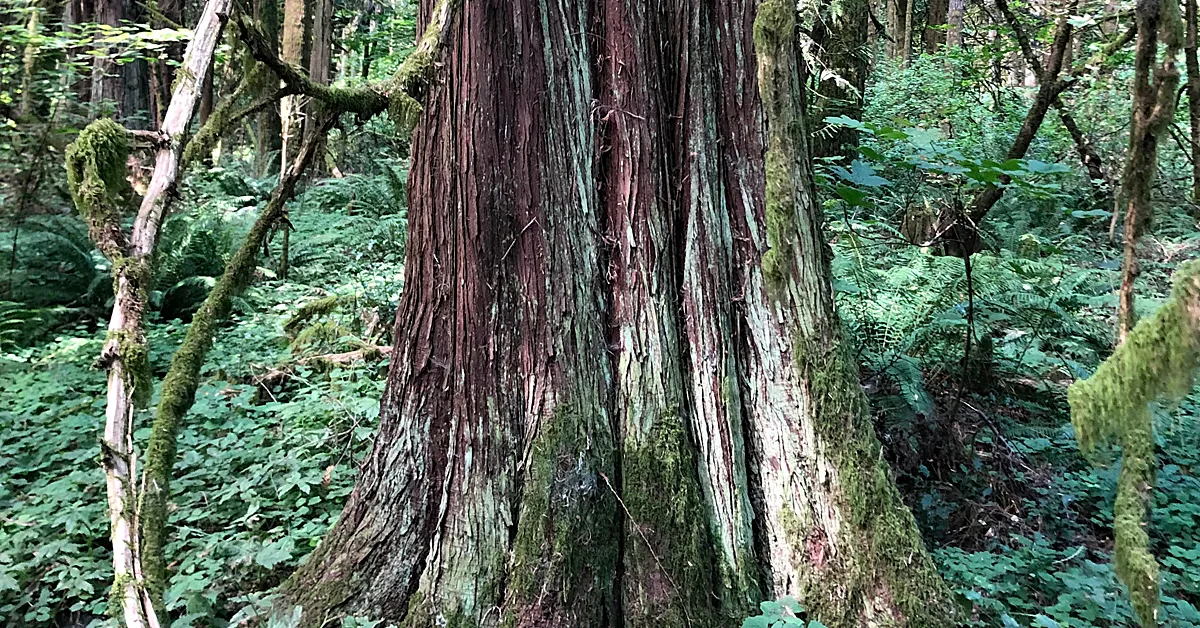7 Ways To Prevent Your Cedar Tree From Dying
.
Need help with your yard? Get your free quote today!
Get a Free Quote!
The decline of cedar trees in Victoria, BC, is a pressing concern, but there are several actions that individuals and communities can take to help protect and preserve these iconic trees. Below are practical steps you can implement to prevent your cedar trees from dying.
1. Proper Watering Practices
Regular Irrigation During Dry Periods
- Deep Watering: Cedars prefer moist soil conditions. During extended dry spells, water your cedar trees deeply once or twice a week to ensure the soil remains moist down to the root level.
- Watering Schedule: The best time to water is early in the morning or late in the evening to reduce evaporation.
- Soaker Hoses and Drip Irrigation: These methods deliver water directly to the root zone efficiently, minimizing waste.
Mulching
- Apply Organic Mulch: A 5-10 cm (2-4 inches) layer of organic mulch like wood chips or bark around the base of the tree helps retain soil moisture and regulate soil temperature.
- Mulch Placement: Keep mulch a few centimeters away from the trunk to prevent rot and pest infestations.
2. Soil Management
Avoid Soil Compaction
- Limit Foot Traffic: Reduce walking and heavy activity near the base of the trees to prevent soil compaction, which can hinder root growth and water infiltration.
- Protect During Construction: If building or landscaping, create a barrier around the root zone to protect it from machinery and equipment.
Improve Soil Quality
- Soil Testing: Conduct a soil test to check for nutrient deficiencies or pH imbalances.
- Amend Soil: Based on test results, add compost or appropriate fertilizers to improve soil fertility and structure.
3. Pest and Disease Management
Regular Monitoring
- Inspect Trees: Regularly check your cedar trees for signs of pests like bark beetles or symptoms of diseases such as fungal infections.
- Early Detection: Look for browning foliage, sap leakage, holes in the bark, or mushrooms at the base of the tree.
Integrated Pest Management (IPM)
- Biological Controls: Encourage beneficial insects that prey on pests harmful to cedars.
- Chemical Treatments: If necessary, use environmentally friendly pesticides or fungicides, following the manufacturer's instructions and local regulations.
- Professional Consultation: For severe infestations or infections, consult a certified arborist or tree care professional.
4. Tree Care and Maintenance
Pruning
- Remove Dead or Diseased Branches: Prune affected branches to prevent the spread of disease and improve the tree's overall health.
- Proper Techniques: Use clean, sharp tools and follow proper pruning methods to avoid causing additional stress to the tree.
Avoid Mechanical Damage
- Protect Trunk and Roots: Be cautious when using lawn equipment near trees to prevent injuries to the bark and roots.
5. Planting and Species Selection
Choose Suitable Varieties
- Drought-Resistant Cultivars: Consider planting cedar varieties that are more tolerant of dry conditions.
- Diverse Planting: Incorporate a mix of native species to promote a resilient ecosystem.
Proper Planting Techniques
- Site Selection: Plant cedars in areas with adequate space, appropriate sunlight, and good drainage.
- Planting Depth: Ensure trees are planted at the correct depth, with the root flare at ground level.
6. Environmental Stewardship
Water Conservation
- Rainwater Harvesting: Collect rainwater for irrigation to conserve resources and provide chemical-free water for your trees.
- Reduce Runoff: Implement landscaping practices that promote water infiltration and reduce erosion.
Support Local Ecosystems
- Encourage Native Understory: Maintain native shrubs and groundcovers that support soil health and moisture retention.
- Control Invasive Species: Remove non-native plants that compete with cedars for resources.
7. Community and Advocacy
Participate in Local Initiatives
- Tree Planting Programs: Join community efforts to plant and care for cedar trees in public spaces.
- Education and Awareness: Share information with neighbors and community members about the importance of cedar tree conservation.
Advocate for Sustainable Practices
- Support Policies: Encourage local governments to implement policies that protect natural habitats and address climate change impacts.
- Urban Planning Input: Participate in urban development discussions to promote the inclusion of green spaces and the preservation of mature trees.
8. Adaptation to Climate Change
Stay Informed
- Climate Trends: Keep abreast of local climate projections and how they may affect tree health.
- Research and Resources: Utilize information from environmental organizations and extension services.
Implement Resilient Landscaping
- Water-Wise Landscaping: Design your landscape to minimize water usage and maximize drought resistance.
- Soil Conservation: Use erosion control methods to protect soil integrity.
Conclusion
While the challenges facing cedar trees are significant, individual and collective actions can make a meaningful difference. By implementing proper tree care practices, monitoring for pests and diseases, and advocating for environmental stewardship, you can help prevent your cedar trees from dying and contribute to the preservation of these valuable trees for future generations.
